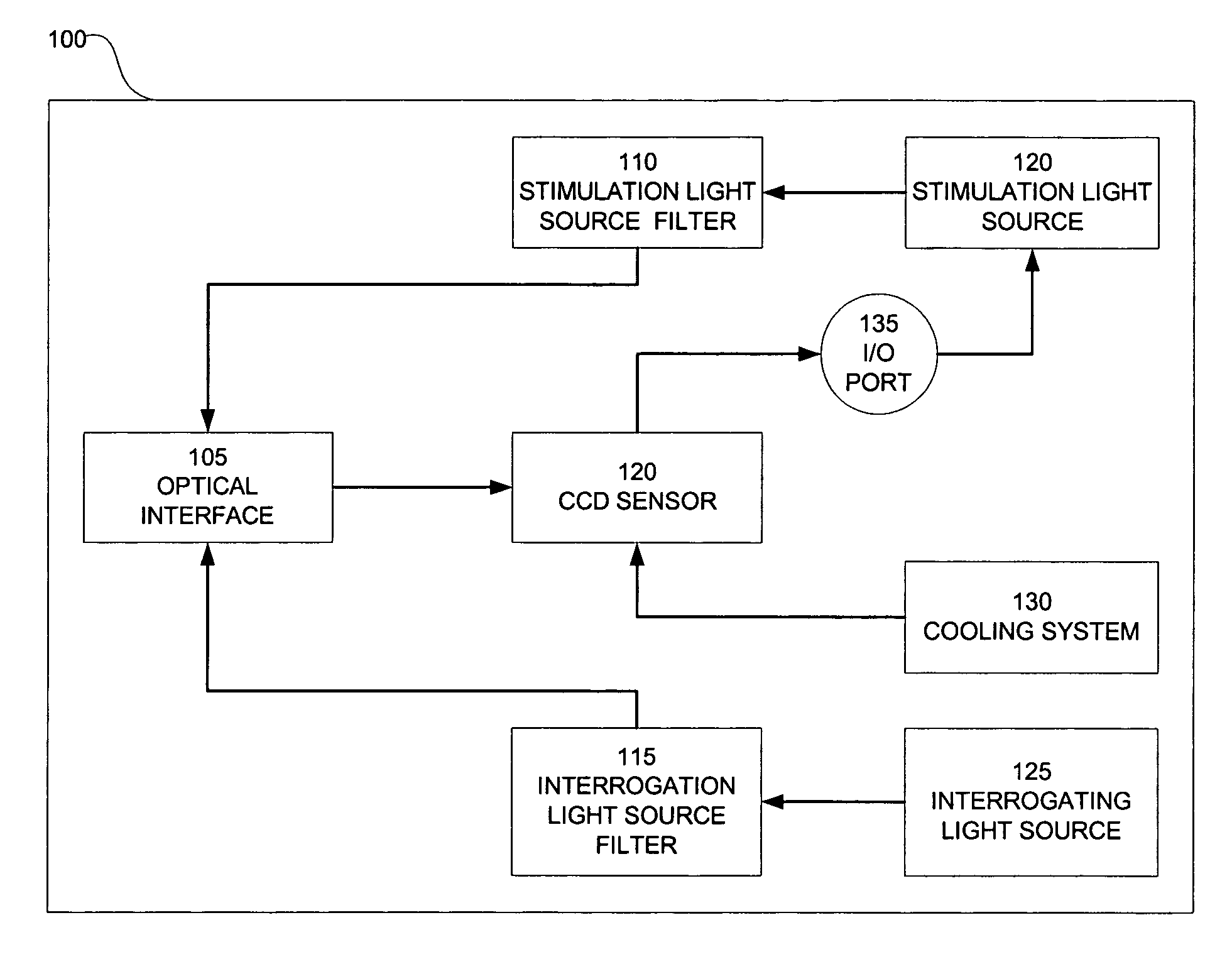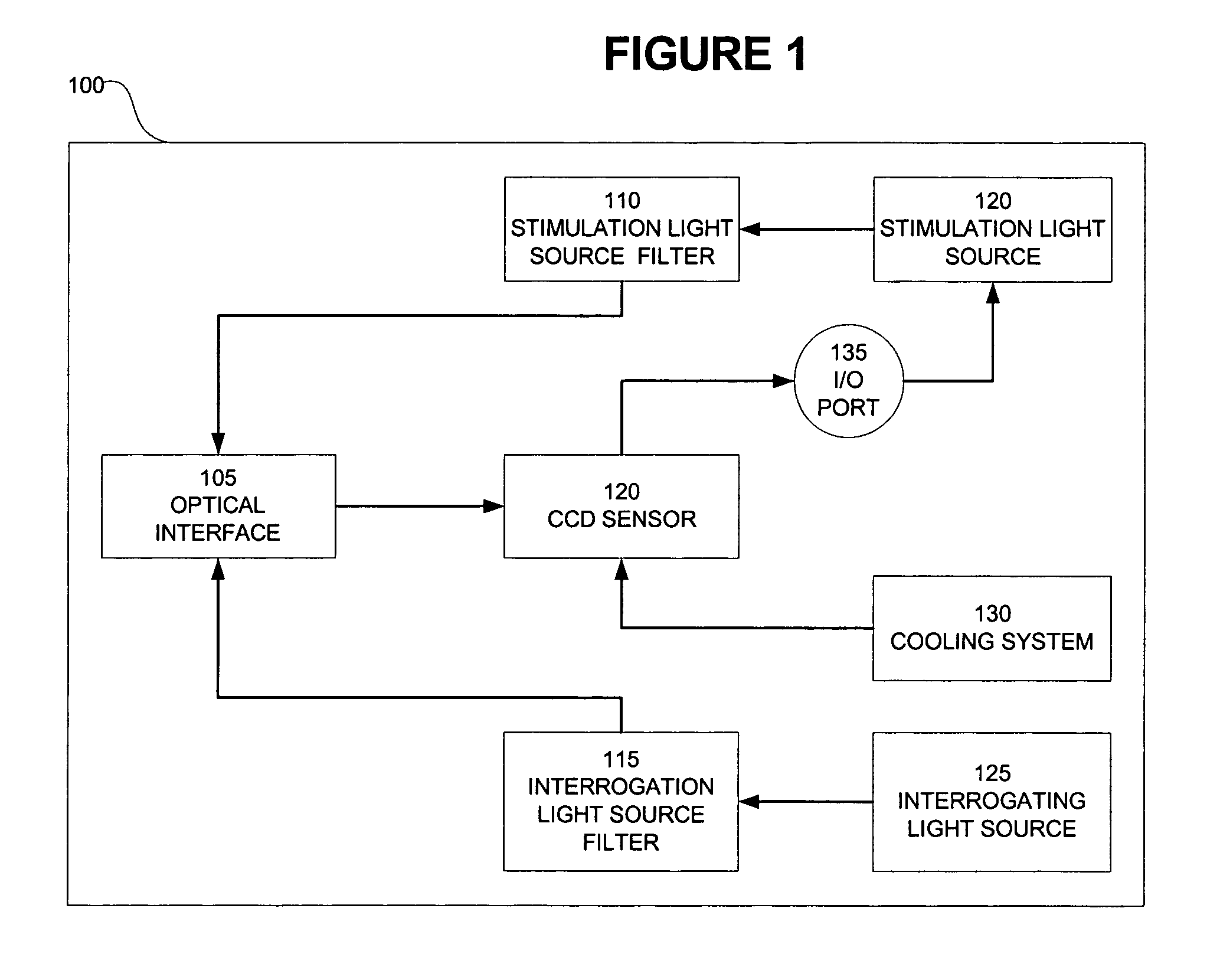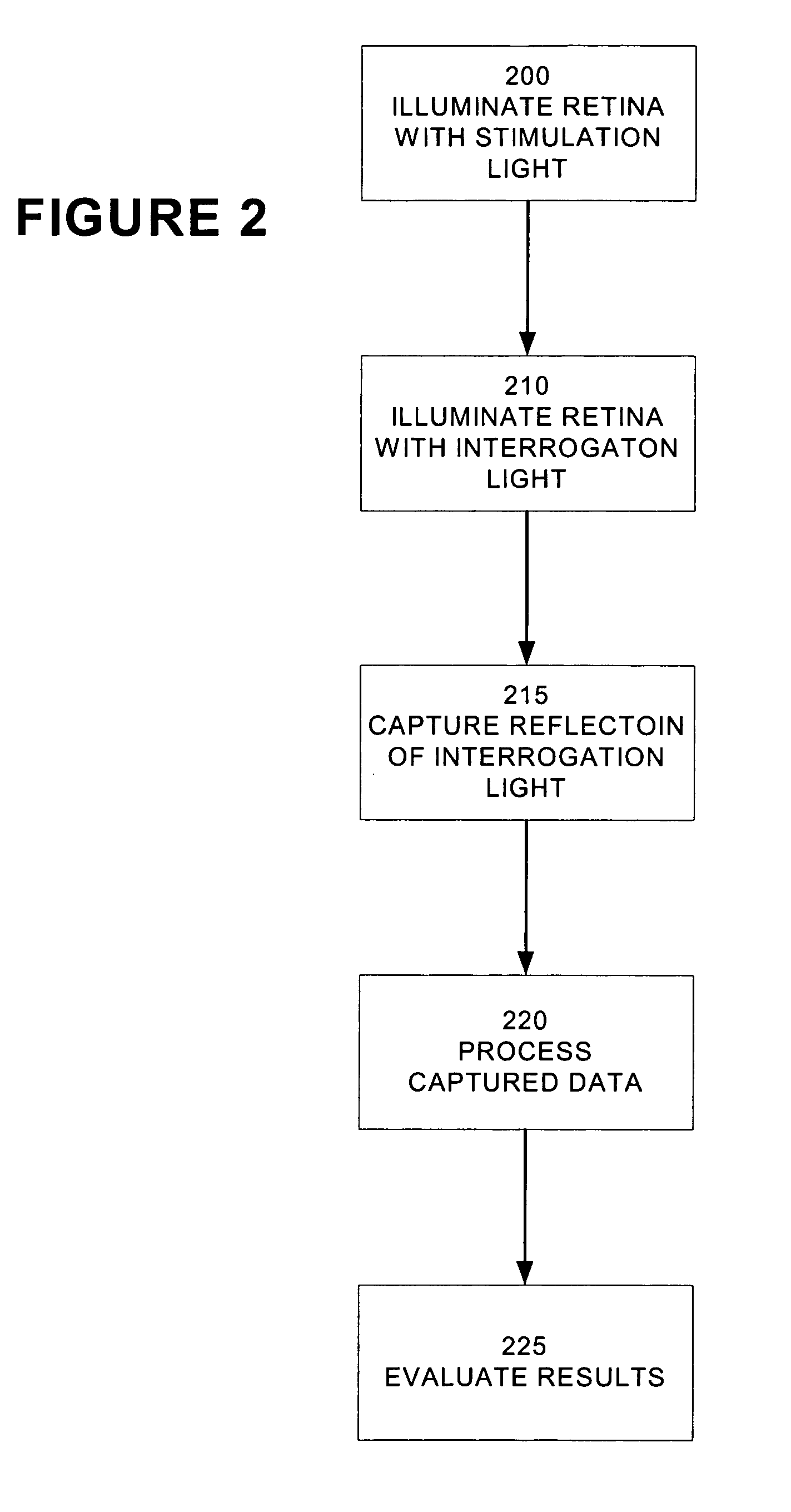Method for detecting a functional signal in retinal images
a functional signal and image technology, applied in the field of retinal image functional signal detection, can solve the problems of difficult detection of functional signal and difficult monitoring of changes, and achieve the effect of removing noise and assessing the health status of the retina
- Summary
- Abstract
- Description
- Claims
- Application Information
AI Technical Summary
Benefits of technology
Problems solved by technology
Method used
Image
Examples
Embodiment Construction
[0037]Independent component analysis (ICA) is a statistical and computational technique used to reveal hidden factors that underlie a set of random variables, in this case, measurements of reflectance from a retina. The goal is to recover independent sources given only the sensor observations that are unknown linear mixtures of the unobserved independent source signals. Thus ICA is use to analyze mulitvariate data stemming from the production of images of the retina. ICA is related to Principle Component Analysis (PCA) and factor analysis but is more capable of finding underlying sources or factors in a data set because it takes into account higher order statistical properties of the data. For example, PCA is a correlation based transformation of data. In contrast, ICA not only decorrelates the signals (i.e. 2nd order statistics) but also reduces the higher order statistical dependencies (i.e. 4th order cumulants) and attempts to make the signals detected as statistically independen...
PUM
 Login to View More
Login to View More Abstract
Description
Claims
Application Information
 Login to View More
Login to View More - R&D
- Intellectual Property
- Life Sciences
- Materials
- Tech Scout
- Unparalleled Data Quality
- Higher Quality Content
- 60% Fewer Hallucinations
Browse by: Latest US Patents, China's latest patents, Technical Efficacy Thesaurus, Application Domain, Technology Topic, Popular Technical Reports.
© 2025 PatSnap. All rights reserved.Legal|Privacy policy|Modern Slavery Act Transparency Statement|Sitemap|About US| Contact US: help@patsnap.com



